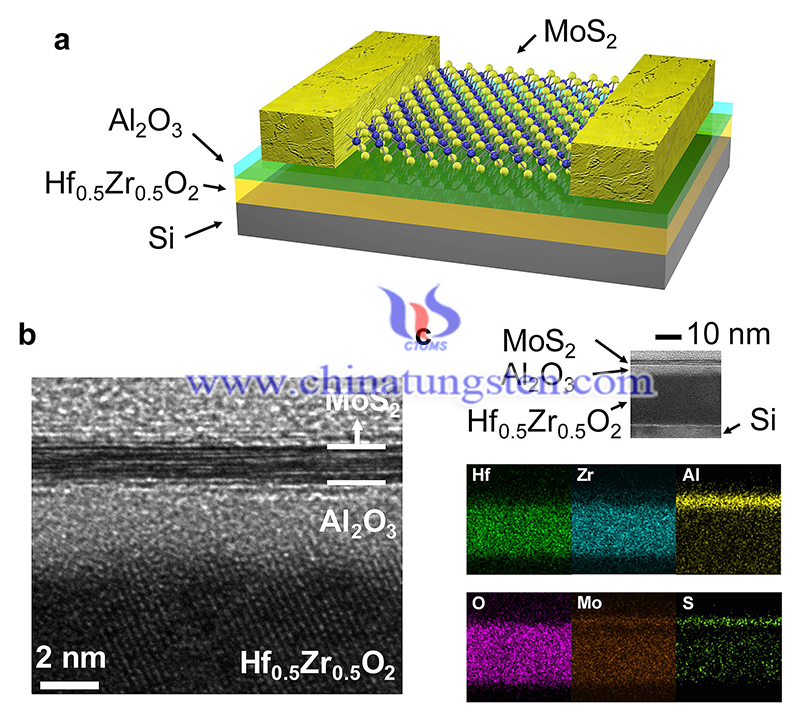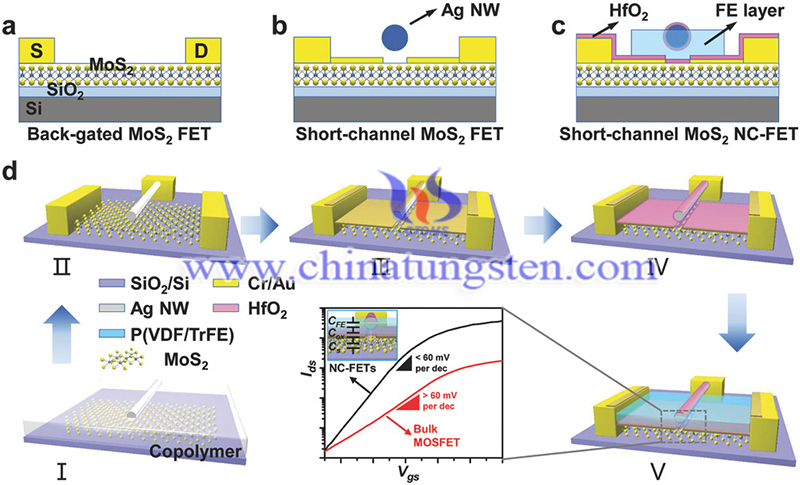Microelectronics Make Significant Progress in MoS2 NCFET
- Details
- Category: Tungsten's News
- Published on Friday, 29 January 2021 22:12
Microelectronics has made important progress in molybdenum disulfide (MoS2) negative capacitance field-effect transistors (NCFET). Recently, the 2020 International Electronic Devices Conference (IEDM) was held in the form of a video conference. At the meeting, the research team of Academician Liu Ming from the Institute of Microelectronics demonstrated the latest research results in the field of molybdenum disulfide (MoS2) NCFET.
The results show that the channel length of molybdenum disulfide NCFET can be shortened to 100nm, and an ultra-low sub-threshold swing is achieved (the sub-threshold swing is a performance indicator that measures the conversion rate between the on and off states of the transistor). The integrated circuits may be able to quickly develop towards low power consumption in the future.

The integrated circuit is a kind of miniature electronic device or component, which is widely applied in televisions, stereos, DVD players, video recorders, computers, electronic organs, communications, remote controls, alarms and other equipment.
Nowadays, in order to reduce the power consumption of integrated circuits, manufacturers often introduce "negative capacitance field-effect transistors (NCFET)" made of ferroelectric materials into the gates, which can break through the sub-threshold swing switching limit of traditional field effect transistors.
Molybdenum disulfide is a low-dimensional semiconductor material with a layered structure similar to graphene. Due to its extremely thin thickness, high mobility, extremely low off-state current and CMOS compatible manufacturing process, MoS2 has become one of the optional channel materials for advanced transistors.
Some recent experiments have shown that MoS2 negative capacitance field-effect transistors can achieve sub-threshold swings below 60mV/dec. However, these studies have only realized devices with longer channels (greater than 500nm), and have not fully explored and utilized the advantages of the negative capacitance effect in short-channel transistors.
In response to this problem, the team of Academician Liu Ming reduced the channel length of MoS2 NCFET to 83nm for the first time through the design and optimization of device parameters and manufacturing process, and achieved lower hysteresis and higher on-state current density. The threshold swing is extremely low (SSmin=17.23 mV/dec and SSave=39 mV/dec).

Compared with the reference device, its average sub-threshold swing is increased from 220 mV/dec to 39 mV/dec, and the channel current is increased by 346 times and 26 times at VGS=0 V and 1.5 V, respectively. This work has promoted the continued shrinking of molybdenum disulfide negative capacitance field-effect transistors size, which has a certain significance for low-power applications of such devices.
The paper "Scaling MoS2 NCFET to 83 nm with Record-low Ratio of SSave/SSRef. = 0.177 and Minimum 20 mV Hysteresis" based on the above research results was selected for 2020 IEDM.
| Molybdenum Supplier: Chinatungsten Online www.molybdenum.com.cn | Tel.: 86 592 5129696; Fax: 86 592 5129797;Email:sales@chinatungsten.com |
| Tungsten News & Prices, 3G Version: http://3g.chinatungsten.com | Molybdenum News & Molybdenum Price: http://news.molybdenum.com.cn |